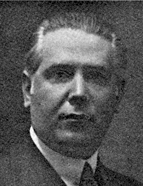

In 1945, towards the end of his life, he returned to Coimbra to take up a Chair of Aesthetics and History of Art, awarded after public examinations, where he succeeded Vergílio Correia. However, it was a fleeting appointment, as he died on 7 September 1947, during a stay at the thermal spas of Cúria. A few months earlier he had been invited to join the management of the Centre for Humanistic Studies, attached to the University of Porto, an institution devoted to research which prepared the ground for the reappearance of the former Faculty of Letters. Aarão de Lacerda certainly took his place on the national scene in the first half of the twentieth century as a notable historian and art critic, recognized for his vision of historical reality, and his acute and demanding analytical ability, by which he distanced himself from subjective positions to focus instead on the construction of careful and methodical researches, tackling different artistic periods from the medieval to the contemporary. As well as running the journals Dionysios, Prismo, A Águia and Mvsev, his name appears as author of many articles and historical studies, in the pages of Ilustração Moderna, Revista de Guimarães, Boletim da Academia Nacional de Belas-Artes, Ocidente, Comércio do Porto and in the collective works História de Portugal: edição monumental, the Grande Enciclopédia Portuguesa e Brasileira and the Guia de Portugal, amongst others. He was honoured with the position of commander of the Order of Sant’Iago da Espada, of corresponding member of the National Academy of Fine Arts, and member of the Portuguese Academy of History.
Works by the author : Da Ironia, do Riso e da Caricatura: ensaio estético, Porto, edição de autor, 1915; Estética da Arte Popular, Porto, Typographia Renascença Portuguesa, 1917; Chronicas de Arte, Porto, Typographia Renascença Portuguesa, 1918; O Templo das Siglas: a Igreja da Ermida do Paiva, Porto, edição de autor, 1919; Para uma finalidade da educação no actual instante, Porto, A. F. Lamares e E. T. Martins, 1922; “A Capela de Nossa Senhora da Conceição (em Braga)”, Revista da Faculdade de Letras da Universidade do Porto, Porto, n.º 5-6, 1923, pp. 485-532; O Fenómeno religioso e a Simbólica, Porto, edição de autor, 1924; O Panteão dos Lemos na Trofa do Vouga, Porto, Tipografia da Companhia Portuguesa Editora, 1928; Beethoven: o primeiro romântico, Porto, Faculdade de Letras da Universidade do Porto, 1929; História da Arte em Portugal, 1.º volume, Porto, Portucalense, 1942.
